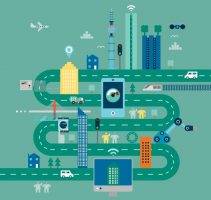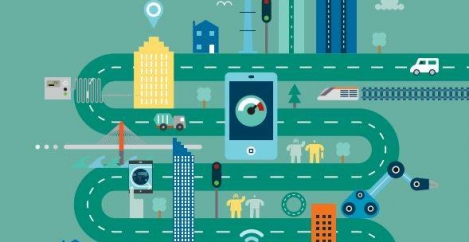July 18, 2016
Opportunities and challenges crystallise for smart cities and buildings 0
 Global law firm Osborne Clarke has released its fourth research report on smart cities and the future of the built environment. The new edition addresses a number of key issues related to the built environment and poses what it suggests are the two key questions: How can the built environment become smarter? And what are the challenges and obstacles that might prevent this from happening? The report looks at case studies cross Europe and interviews experts in an attempt to discover how smart built environments ‘leverage data, new technology and innovative and collaborative thinking to deliver services that benefit citizens’. The report concludes that a fundamental shift in thinking is already well underway but it is patchy and still faces a large number of major obstacles, not least a silo mentality in decision making which restricts the ability of organisations to innovate and achieve results across a broad base of objectives.
Global law firm Osborne Clarke has released its fourth research report on smart cities and the future of the built environment. The new edition addresses a number of key issues related to the built environment and poses what it suggests are the two key questions: How can the built environment become smarter? And what are the challenges and obstacles that might prevent this from happening? The report looks at case studies cross Europe and interviews experts in an attempt to discover how smart built environments ‘leverage data, new technology and innovative and collaborative thinking to deliver services that benefit citizens’. The report concludes that a fundamental shift in thinking is already well underway but it is patchy and still faces a large number of major obstacles, not least a silo mentality in decision making which restricts the ability of organisations to innovate and achieve results across a broad base of objectives.
The report identifies several key themes and opportunities for those interested in the development of smart cities the built environment, which include:
The retrofit challenge and opportunity
While it’s easier to integrate smart systems during the construction of new buildings, technology also needs to be implemented in existing buildings if the built environment really is going to be come smarter. The report addresses some of the challenges with refurbishing existing buildings, which even in 2050 will represent over 60 percent of UK building stock.
Making better use of data
Buildings can become smarter by making better use of information that already exists. Improving how we use data can also make collections of buildings, commercial districts or even cities smarter.
Energy is a real focus
One core aspect of the built environment that is seeing a lot of focus and investment is building energy efficiency. The report addresses the importance of reducing the carbon footprint of buildings and looks at how easy is it to integrate buildings into the power system.
The silo mentality – obstructing innovation
Decision making power often resides in isolated silos, resulting in the safest and least innovative solution being procured.
The construction industry – starting to innovate
Construction companies are naturally crucial if the built environment is to become smarter, however the industry as a whole is often slow to innovate.
The report also examines case studies that illustrate the changes taking place in the built environment space as new technologies emerge and become commercially viable. These include smarter energy efficiency solutions, building retrofits, granular data gathering, and smarter access control systems.














